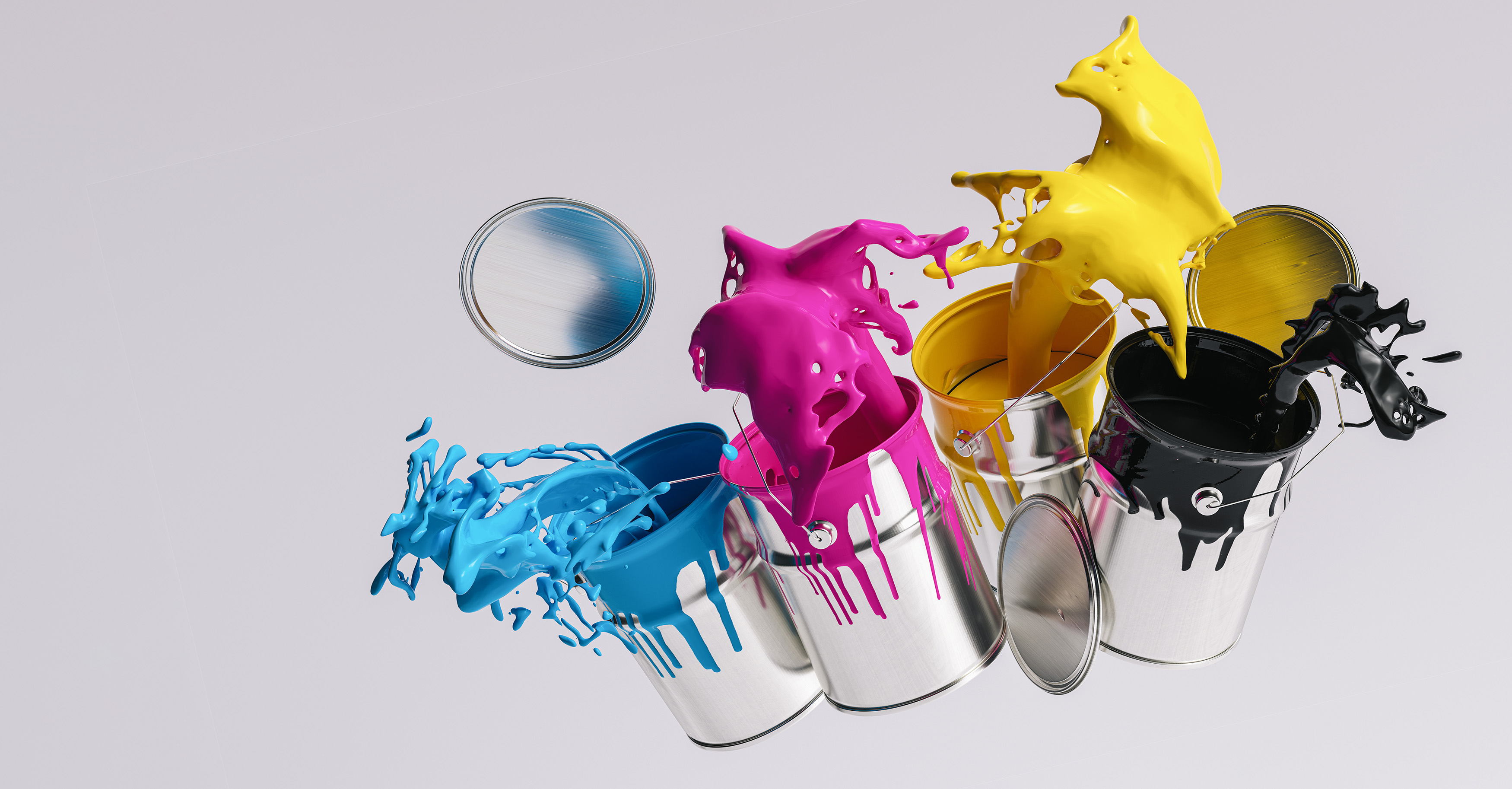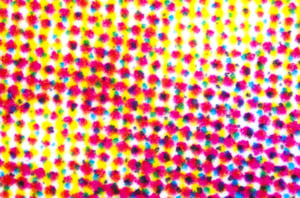
Full colour printing is actually a trick played on the brain and the eye. A full colour image is in fact made up of only four primary process colours. These colours being cyan, magenta, yellow and black, often abbreviated to C.M.Y.K.
 Four colour process printing is an illusion based on the mixture of the four process colours in a calculated and regimented way, which from a distance appear to produce a larger range of colours and thus a full colour image.
Four colour process printing is an illusion based on the mixture of the four process colours in a calculated and regimented way, which from a distance appear to produce a larger range of colours and thus a full colour image.
The full colour image is printed in a ‘rosette’ pattern of dots. The dots vary in size depending on what is happening in that particular area of the image, to give the illusion of light and dark or a ‘halftone’.
 The use of halftones can most easily be seen when looking closely at a black and white newspaper picture, with dark ‘shadow’ areas having larger black dots, and the light ‘highlight’ areas having smaller black dots.
The use of halftones can most easily be seen when looking closely at a black and white newspaper picture, with dark ‘shadow’ areas having larger black dots, and the light ‘highlight’ areas having smaller black dots.
In order to achieve the illusion of full colour, the dots of the four process colours are mixed in the halftone fashion laying each colour of dots over the previous, with different mixtures of each coloured dot helping to achieve the desired colour outcome.
Should you have any questions about print, or have a project you'd like us to look at for you, please get in touch. Find out more about the range of print services available from us here.
Previous Story
1 Osier Way
Swan Business Park
Buckingham
MK18 1TB
01280 824000
info@bcqsolutions.com
Sign up for our latest insights, articles and news.
Your marketing. Transformed.